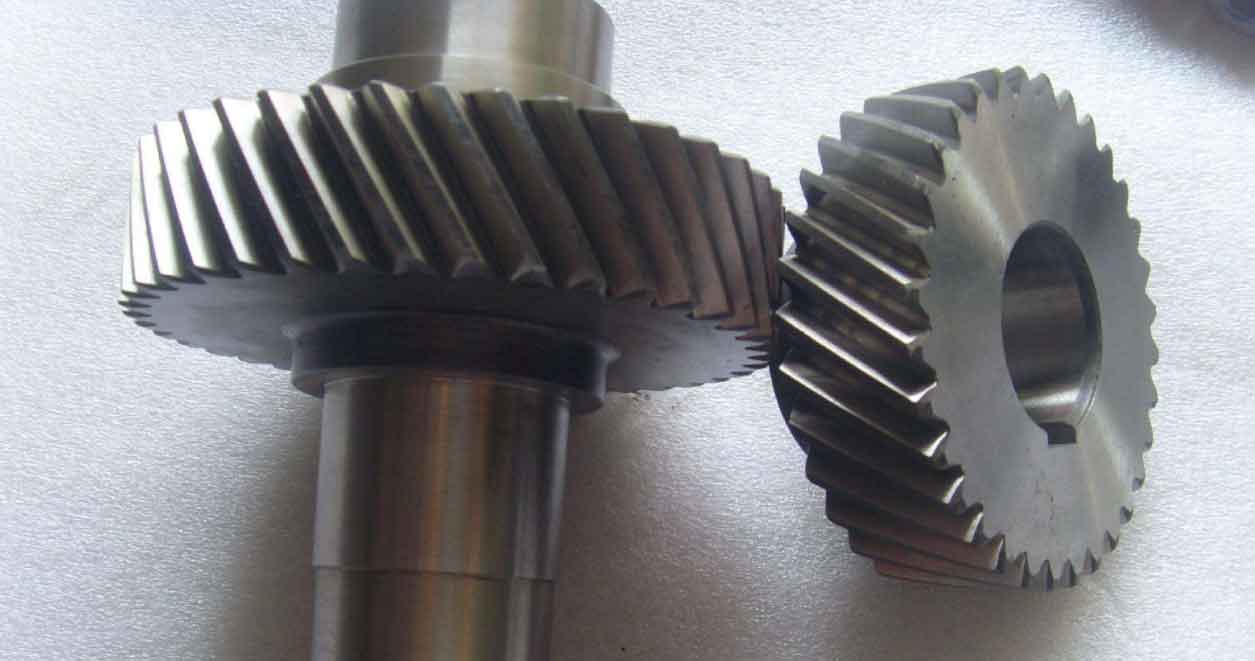Chen et al. deduced and studied the influence of the meshing stiffness of the internal meshing gear pair and the modification amount of the tooth profile of the external meshing gear on the meshing stiffness by using the analytical method. The larger the modification amount, the steeper the change of the meshing stiffness. Ma et al. proposed the action of linear, curvilinear and parabolic crack paths and limit lines. The improved mesh stiffness potential energy method model of healthy gear pair was used to study the mesh stiffness of spur gears with cracks. Saxena et al. studied the change of gear meshing stiffness caused by the change of direction of time-varying friction on both sides of the pitch line, and comprehensively considered the influence of sliding friction and different spalling shapes, sizes and positions and other parameters on the time-varying meshing stiffness, so as to understand the dynamic response of the gear pair. Ma et al proposed an improved analytical method (IAM) to calculate the time-varying meshing stiffness of gear teeth, and considered the coefficient ratio between the extended contact surface and the non-contact surface, and studied the calculation of meshing stiffness under the modification of tooth top. At the same time, considering the size effect of rectangular spalling on tooth surface, the influence of meshing stiffness under spalling state was further studied by piecewise modification of the improved algorithm. Hu et al. simulated the transient crack propagation and incorporated the propagation model into the potential energy method. When crack propagation occurs, the improved method is used to calculate the gear meshing stiffness. Different transient propagation models were used to simulate the crack propagation and crack propagation deterioration length in a short period of time, and the response of the crack degree to the variation of the mesh stiffness was obtained through the simulation results.
Saxena gears meshing stiffness calculation based on the potential energy method, such as damping modeling and related, and as the calculation of the elastic support gear flexible rotor shaft system modal analysis of the input parameters, the research on the system caused by the modal and the function of the frequency response function, help to detect the failure characteristics of the gear in the operation of the database. SDnchez et al. made in-depth studies on the overall gear tooth deviation and local contact deviation, and made contact assessment on the engagement points to approximate the load distribution ratio effect, and compared the results with the hypothesis of minimum elastic potential energy (MEPE model). Marques et al. respectively studied the meshing stiffness of the rigid body model and the elastic model of the gear pair under quasi-static conditions, and elaborated the advantages and applicability of the proposed model and the ISO6336 model in detail. Luo etc. Based on the analytical method for prediction and assessment of the gear mesh stiffness, the key in a all parameters is put forward in the gear center distance as the variable to express new gear mesh motion model, the meshing process is used to evaluate the change over time of tooth meshing gear meshing center distance of actual contact position, and evaluate the gear center deviation caused by tooth mesh stiffness change, such as assembly error beating, gear, shaft bending deformation and bearing, etc.
Karpat et al. used empirical derivation to study the effect of meshing stiffness under asymmetric gear teeth. Han are analyzed in detail, such as friction effects, of the meshing tooth spalling and local fracture meshing parameters and geometry shape on the helical gear tooth mesh stiffness, the influence of because of its helical gear is straight gear meshing process the complexity and multiple overlapping, the meshing stiffness analytic method compared with the straight gear more complex and time-consuming calculation, but the modified calculation analytic method for helical gear after other application calculation laid the basis of simulation analysis and the effect of the ground. Yang et al. introduced in detail the actual involute tooth profile obtained by rack shaper machining method following Litvin vector method, and fully considered the influence of tooth root round Angle and tooth profile machining deviation effect on gear stiffness. Tang et al. developed a lamellar superposition mathematical model of multi-coupling stiffness to study the meshing stiffness of helical gears. Sun, etc. Based on the chip hypothesis theory, considering modified stiffness matrix and nonlinear contact stiffness and tooth profile error, calculate the each piece of gear cutting on stiffness, and according to the deformation of meshing period and the relationship between the total rigidity and draw a spur gear pair and time-varying meshing stiffness is derived, finally to grind a Gui effect of tooth width, and the torque on the meshing stiffness of the impact. Rezaei et al. derived the analytical equation of spur gear pair, and carried out coupling superposition calculation of helical gear division and stiffness based on the hypothesis of slice division, and deduced the meshing stiffness of helical gear pair. The equation was extended to the planetary system of helical gear to study the meshing stiffness value of the gear system under internal and external meshing action under planetary system.


